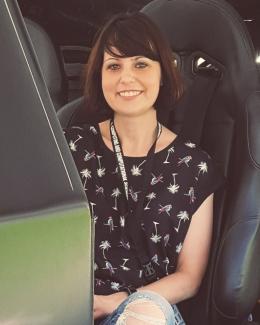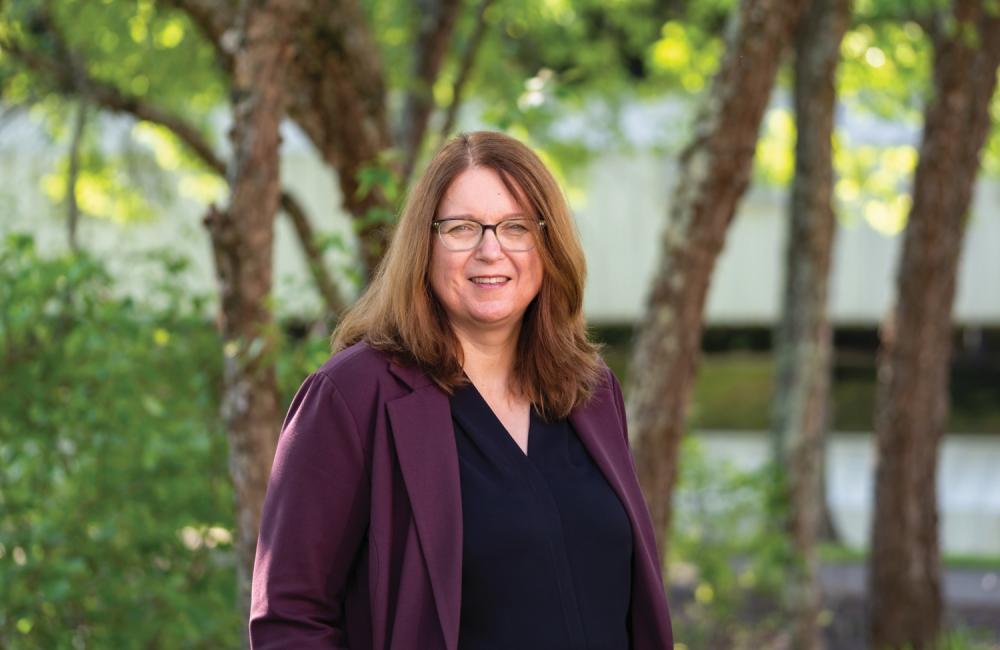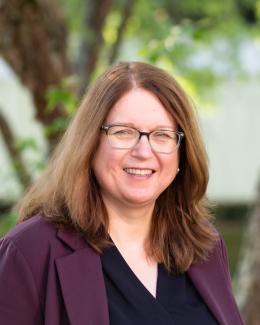Cynthia Jenks leads ORNL’s Physical Sciences Directorate with a research portfolio spanning basic and applied initiatives across materials sciences, chemistry, nanoscience and physics. The programs she leads advance understanding of the physical world and drive breakthroughs in new materials, chemical processes and energy technologies.
Jenks says she loves working at the interface of basic and applied research. “It’s exciting to see fundamental discoveries about matter and processes build a knowledge base that informs solutions to challenges for energy security, the environment or global sustainability,” she said.
Jenks came to ORNL this year from Argonne National Laboratory, where she led the Chemical Sciences and Engineering Division. Prior to her role at Argonne, she directed the Chemical and Biological Sciences Division at Ames Laboratory. Both roles put her at the helm of research activities supported by offices across the DOE, including the offices of Science, Energy Efficiency and Renewable Energy, and Fossil Energy.
An early love of math and chemistry — and great teachers — inspired Jenks to pursue a science career. She studied chemical engineering as an undergraduate but was also drawn to physical chemistry. She earned graduate degrees in both — a master’s in chemical engineering and a Ph.D. in physical chemistry — from Columbia University.
The first stage of her nearly 30-year career with the national laboratories began when she was hired as a postdoctoral researcher at Ames. With an expertise in surface chemistry, she probed fundamental questions about the structure and reactivity of surfaces, especially how molecules and surfaces interact. For example, an early project investigated how perfluoropolyethers react with metal surfaces, a chemical process important to high-performance lubricants for the aerospace industry. Jenks’ focus on the chemistry of materials has shaped basic research on quasicrystals, intermetallics and metal thin films to advance broad engineering and technology applications.
Her favorite part of working at national laboratories, she says, is the ability to work with scientists and engineers from all areas of expertise.
“That is because the challenges we are working to address as a nation are so big that you need many people with many different backgrounds and perspectives to solve them,” she said. “Breakthroughs are often the result of decades of basic research that expands knowledge to make these big questions answerable.”
As an associate laboratory director, Jenks looks forward to working with DOE to address the nation’s energy priorities, ranging from developing energy storage materials, high-performance alloys and plastics, and carbon dioxide capture and conversion to recovering critical materials and exploring the physical processes of cosmic phenomenon.
“We can leverage the expertise of the people and facilities across our directorate and emphasize our unique strengths, such as chemical separations and materials in extremes, to move forward. Tied to that aim, we will continue to expand capabilities at the Center for Nanophase Materials Sciences and engage the lab’s neutron resources,” Jenks said. — Ashley Huff




